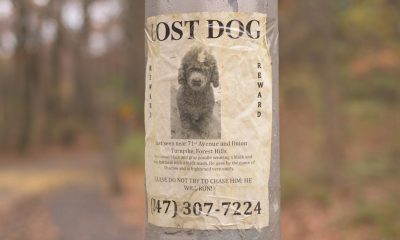By Mark Waghorn via SWNS
The world's biggest family tree linking around 27 million people has been created by scientists.
It combines thousands of modern and prehistoric genomes - shedding fresh light on key events in human history.
The breakthrough is a major step towards mapping the entirety of relationships - a single lineage that traces the ancestry of us all.
via GIPHY
It also has widespread implications for medical research - identifying genetic predictors of disease.
Principal author Dr. Yan Wong explained: "We have basically built a huge family tree.
"It is a genealogy for all of humanity that models as exactly as we can the history that generated all the genetic variation we find in humans today.
"This allows us to see how every person's genetic sequence relates to every other - along all the points of the genome."
The University of Oxford team trawled eight databases containing 3,609 different genome sequences from 215 populations.
They included samples from across the world - some over 100,000 years old.
The resulting network contained almost 27 million ancestors - and 231 million ancestral lineages.
It reveals how people across the world are related in unprecedented detail.
Individual regions of DNA are inherited from either the mother or father. Each point can be thought of as a tree.
A set - known as a 'tree sequence' - links them to common ancestors where mutations first appeared.
Computer algorithms explain the patterns - predicting when and where they lived.
The study covers the migration out of Africa, interbreeding with Neanderthals and the arrival of primitive humans in Asia and Oceania.
Lead author Dr. Anthony Wilder Wohns, now at MIT in the US, said: "Essentially, we are reconstructing the genomes of our ancestors and using them to form a vast network of relationships.
"We can then estimate when and where these ancestors lived. The power of our approach is it makes very few assumptions about the underlying data and can also include both modern and ancient DNA samples."
The past two decades have generated genomes from hundreds of thousands of people. Many lived tens of thousands of years ago.
Variable quality and limitations in analyses made painting an accurate picture impossible - until now.
The revolutionary technique described in the journal Science allows for missing and erroneous data - and uses fragmented ancient genomes.
Dr. Wong said: ‘This study is laying the groundwork for the next generation of DNA sequencing.
"As the quality of genome sequences from modern and ancient DNA samples improves, the trees will become even more accurate.
"We will eventually be able to generate a single, unified map that explains the descent of all the human genetic variation we see today."
The genealogical map could easily accommodate millions more genomes as they become available.
Dr. Wohns added: "While humans are the focus of this study, the method is valid for most living things - from orangutans to bacteria.
"It could be particularly beneficial in medical genetics, in separating out true associations between genetic regions and diseases from spurious connections arising from our shared ancestral history."

 Parenting1 week ago
Parenting1 week ago
 Lifestyle6 days ago
Lifestyle6 days ago
 Wildlife2 days ago
Wildlife2 days ago
 Good News3 days ago
Good News3 days ago
 Health3 days ago
Health3 days ago
 Broadcast1 week ago
Broadcast1 week ago
 Environment1 week ago
Environment1 week ago
 Work2 days ago
Work2 days ago






















